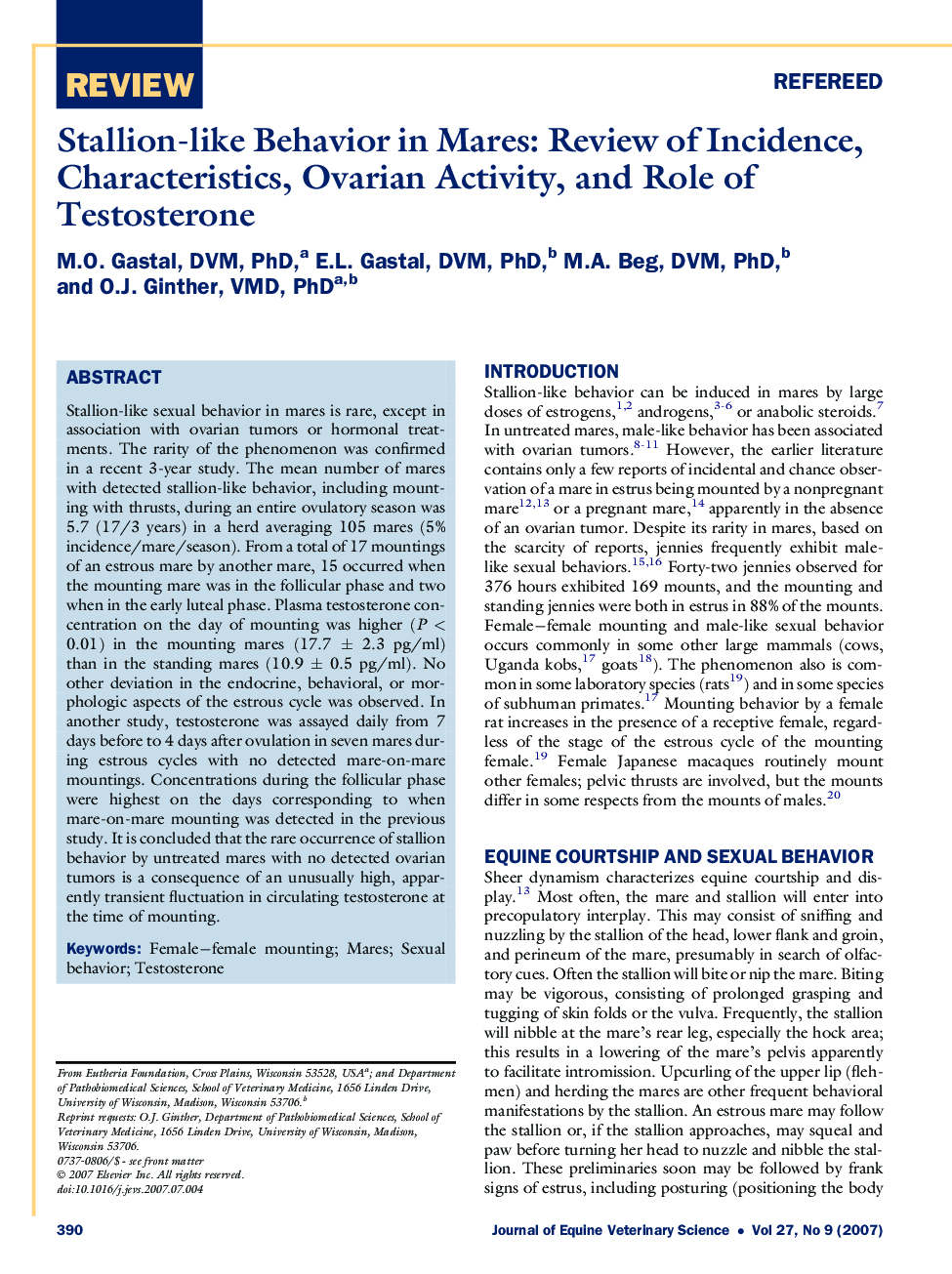| کد مقاله | کد نشریه | سال انتشار | مقاله انگلیسی | نسخه تمام متن |
|---|---|---|---|---|
| 2396390 | 1101618 | 2007 | 4 صفحه PDF | دانلود رایگان |

Stallion-like sexual behavior in mares is rare, except in association with ovarian tumors or hormonal treatments. The rarity of the phenomenon was confirmed in a recent 3-year study. The mean number of mares with detected stallion-like behavior, including mounting with thrusts, during an entire ovulatory season was 5.7 (17/3 years) in a herd averaging 105 mares (5% incidence/mare/season). From a total of 17 mountings of an estrous mare by another mare, 15 occurred when the mounting mare was in the follicular phase and two when in the early luteal phase. Plasma testosterone concentration on the day of mounting was higher (P < 0.01) in the mounting mares (17.7 ± 2.3 pg/ml) than in the standing mares (10.9 ± 0.5 pg/ml). No other deviation in the endocrine, behavioral, or morphologic aspects of the estrous cycle was observed. In another study, testosterone was assayed daily from 7 days before to 4 days after ovulation in seven mares during estrous cycles with no detected mare-on-mare mountings. Concentrations during the follicular phase were highest on the days corresponding to when mare-on-mare mounting was detected in the previous study. It is concluded that the rare occurrence of stallion behavior by untreated mares with no detected ovarian tumors is a consequence of an unusually high, apparently transient fluctuation in circulating testosterone at the time of mounting.
Journal: Journal of Equine Veterinary Science - Volume 27, Issue 9, September 2007, Pages 390–393